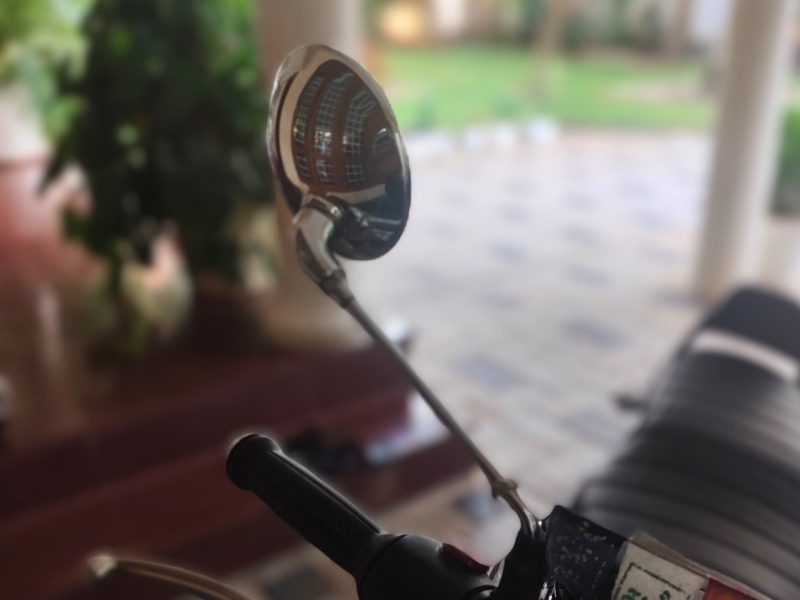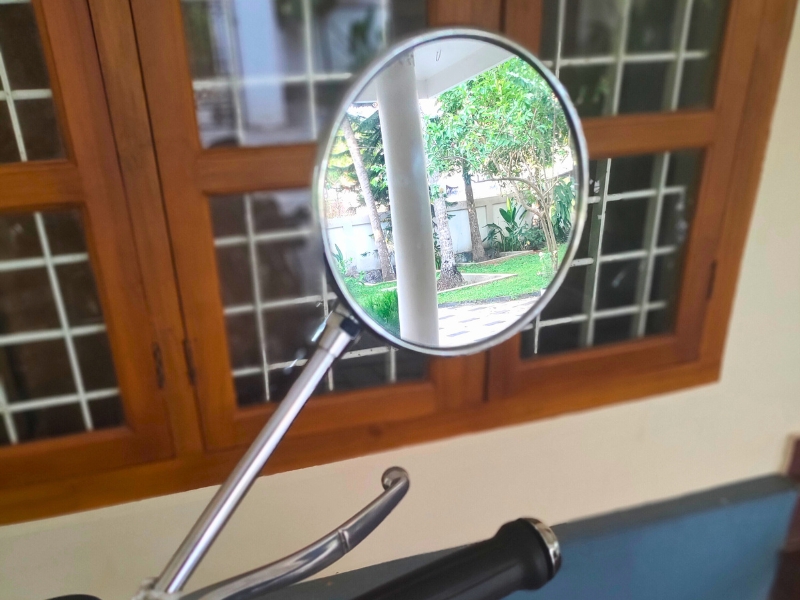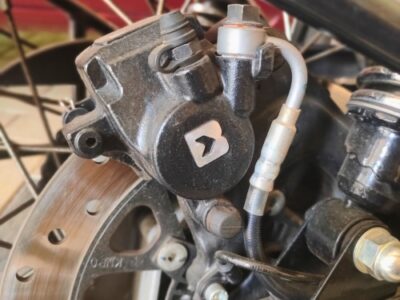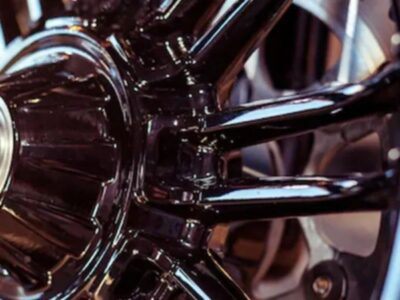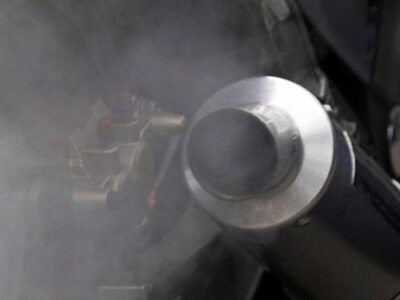
|
Getting your Trinity Audio player ready...
|
Long story short: Do you know what penalties occur while riding without a mirror bike in India? Is a mirror compulsory in two-wheelers? What are the current two-wheeler mirrors fine in India? Don’t know the same about bike and scooter mirror fine? Then check out this article.
Riding without properly installed rear-view mirrors is a serious legal violation that can result in significant penalties. This guide details the current rules, changes to old rules, revised fines, and consequences of not having mirrors on motorcycles or scooters while riding on Indian roads. First, let’s discuss the basics.
Key Takeaways
- The Motor Vehicles Act 1988 is Indian legislation that regulates road transport.
- Chapter 13, Section 190 of this Act mandates that all vehicles, including motorcycles, must be roadworthy, which includes having functional mirrors.
- Regulations regarding mirrors can differ among Indian states due to the country’s federal structure.
- Motorcycle riders are especially at risk, being 28 times more likely to die in crashes than other motorists.
- Riders struggle to maintain situational awareness without mirrors, especially during lane changes and turns.
What is the Motor Vehicle Act 1988 of India?
The Motor Vehicles Act 1988 is a comprehensive legislation enacted by the Parliament of India to regulate all aspects of road transport vehicles in the country. The Act provides the framework for road safety, vehicle registration, licensing, and the management of traffic offences.
What is the Chapter 13, Section 190 of the Motor Vehicle Act 1988?
The Motor Vehicle Act 1988’s Chapter 13 Section 190 forms the cornerstone of legal provisions regarding vehicle safety equipment, including mirrors. This section addresses vehicles operating in unsafe conditions and provides the fundamental framework for enforcing safety regulations.
The section is particularly significant as it targets individuals who knowingly drive or permit vehicles to be driven in conditions that could endanger others. Under this provision, the law prescribes penalties that include potential imprisonment, especially in cases where safety violations result in property damage or injury.
How are the Motor Vehicle Act 1988 Chapter 13 Section 190 and the absence of mirrors for motorcycles interconnected in India?
The Motor Vehicles Act 1988 is a comprehensive legal framework governing road transport in India. Within this Act, Chapter 13 deals with offences and penalties. Section 190 specifically addresses the consequences of operating vehicles in unsafe conditions. This section is particularly relevant when discussing the requirement for motorcycles to have mirrors.
Section 190 mandates that all vehicles, including motorcycles, be roadworthy. This includes having functional mirrors. Riding without mirrors violates this section, and the rider is liable for penalties.
Explanation of Chapter 13 Section 190 in The Motor Vehicles Act, 1988 – Using the vehicle unsafely.
Subsection (1), Any person who drives or causes or allows to be driven in any public place a motor vehicle or trailer while the vehicle or trailer has any defect, which such person knows of or could have discovered by the exercise of ordinary care and which is calculated to render the driving of the vehicle a source of danger to persons and vehicles using such place, shall be punishable with fine which may extend to Rs 250 or, if as a result of such defect, an accident is caused causing bodily injury or damage to property, with imprisonment for a term which may extend to 3 months, or with fine which may extend to one thousand rupees, or with both.
Subsection (2), Any person who drives, causes, or allows a motor vehicle to be driven in any public place and violates the standards prescribed about road safety, noise control, and air pollution shall be punished for the first offence with a fine of Rs 1,000 and for any second or subsequent offence with a fine of Rs 2,000.
Subsection (3), Any person who drives or causes or allows to be driven, in any public place, a motor vehicle which violates the provisions of this Act or the rules made thereunder relating to the carriage of goods which are of dangerous nature to human life shall be punishable for the first offence which may extend to Rs 3,000, or with imprisonment for a term which may extend to 1 year, or with both, and for any second or subsequent offence with fine which may extend to Rs 5,000, or with imprisonment for a term which may extend to 3 years, or with both.
Changes in section 190 of The Motor Vehicles Act, 1988 in the Motorcycle Amendment Act 2019
In subsection (1),
- Driving with known defects (including missing mirrors) could result in fines of Rs 1500, increased from Rs 250
- If the defect leads to an accident causing bodily injury or property damage, the penalties increase to:
- Imprisonment for up to 6 months increased from 3 months.
- Fine up to Rs 5,000 increased from Rs 1,000.
- For a subsequent offence – imprisonment for six months or a fine of ten thousand rupees for bodily injury or property damage.
In subsection (2),
- As in The Motor Vehicles Act, 1988, instead of a Rs 1,000 fine, there is imprisonment for 3 months, a fine that may extend to Rs 10,000 or both. He shall be disqualified for holding a licence for 3 months.
- As in The Motor Vehicles Act, 1988, instead of a Rs 2,000 fine, there is imprisonment for six months, or with a fine which may extend to Rs 10,000 or with both.
In subsection (3),
- As in The Motor Vehicles Act, 1988, there is a Rs 3,000 fine instead of a Rs 10,000 fine, and he shall be disqualified for holding a licence for 3 months.
- As in The Motor Vehicles Act, 1988, instead of a Rs 5,000 fine for a second or subsequent offence, there is a fine of Rs 20,000, and he shall be disqualified for holding a licence for 3 years.
State-Specific Implementation and Variations in India
The implementation of mirror-related regulations varies across different Indian states, reflecting the federal structure of India’s governance. While the Motor Vehicle Act provides a national framework, individual states can implement strategies and delicate structures that suit their local conditions.
Some states have introduced amendments or additional rules to the Motor Vehicle Act, resulting in varying levels of enforcement and penalty amounts. This variation in implementation is often influenced by factors such as local governance priorities, administrative capacity, and specific regional challenges in traffic management.
Safety Implications and Statistical Evidence of Motorcycle Mirrors
The importance of proper mirrors on two-wheelers is underscored by alarming safety statistics. Motorcycle riders are particularly vulnerable on the road, being 28 times more likely to die in a crash compared to other motorists.
The absence of mirrors significantly impairs a rider’s ability to maintain situational awareness, particularly during lane changes and turns. Studies have shown that blind spot accidents contribute to many road incidents, highlighting the critical role that properly installed and adjusted mirrors play in preventing accidents.
Recommendations for Compliance
For two-wheeler owners, ensuring continuous compliance with mirror requirements is the most prudent approach. This involves installing both left and right rear-view mirrors and maintaining them in proper working condition.
Regular inspection and immediate replacement of damaged mirrors are essential practices that can help avoid penalties and, more importantly, prevent accidents. Mirror installation and maintenance documentation can also prove valuable in demonstrating compliance with safety regulations.
FAQs About motorcycle mirrors penalties & & Challan in India
1. What is Section 190 of the Motor Vehicles Act, and how does it relate to missing mirrors?
Section 190 of the Motor Vehicles Act of 1988 addresses vehicles being operated in unsafe conditions. Missing mirrors fall under this section, constituting a safety defect that could endanger others. The section provides penalties, including fines and potential imprisonment if the defect leads to accidents or injuries.
2. What are the basic penalties for driving without mirrors under Section 190?
Under Section 190, the penalties include:
- For first-time offences: Fines up to Rs 1,000
- For subsequent offences: Fines up to Rs 2,000
- If the defect leads to an accident causing injury or damage, Potential imprisonment for up to 3 months
3. Did the 2019 Motor Vehicle Amendment Act change the penalties for missing mirrors?
The 2019 Amendment Act introduced changes to traffic violation penalties and enforcement measures. It generally increased penalties across various categories of violations and enhanced enforcement measures.
4. Do challan amounts for missing mirrors vary by state?
Due to India’s federal structure, challan amounts can vary significantly across different states. States have the authority to modify certain aspects of the law to suit local conditions and enforcement capabilities. For example, some states may impose higher fines as a deterrent, while others might have lower penalties.
5. Can I contest a challan issued for missing mirrors?
Yes, you can contest mirror-related challans through:
- E-courts
- Virtual courts
- Lok Adalats These platforms are available for resolving disputes related to traffic violations
6. Are dealer-fitted mirrors considered legal modifications?
Authorities may question dealer-fitted mirrors as modifications. To avoid penalties, it’s important to have proper homologation proof from the dealer or manufacturer.
7. What are the safety implications of driving without mirrors?
Missing mirrors are considered a serious safety violation because:
- They compromise the rider’s ability to monitor surrounding traffic
- They increase the risk of accidents
- They violate mandatory safety equipment requirements under the CMVR, 1989
8. What should I do if I receive an incorrect e-challan for mirror violations?
If you receive an incorrect e-challan:
- Document your vehicle’s current condition with photographs
- Gather any relevant proof of mirror compliance
- Contest the challan through appropriate legal channels (e-courts or virtual courts)
- Keep all relevant vehicle documentation handy
Other related articles from Bikeleague India
Conclusion
We discussed new and old laws, FAQs, fines, and motorcycle mirror penalties in India. I hope you are crystal clear about the rules. If you have other doubts or queries, email us at bikeleague2017@gmail.com or share your doubts or opinions in the comments section below. We are always eager to help and assist you. Also, here are several social media platforms of Bikeleague India to raise your suspicions.

